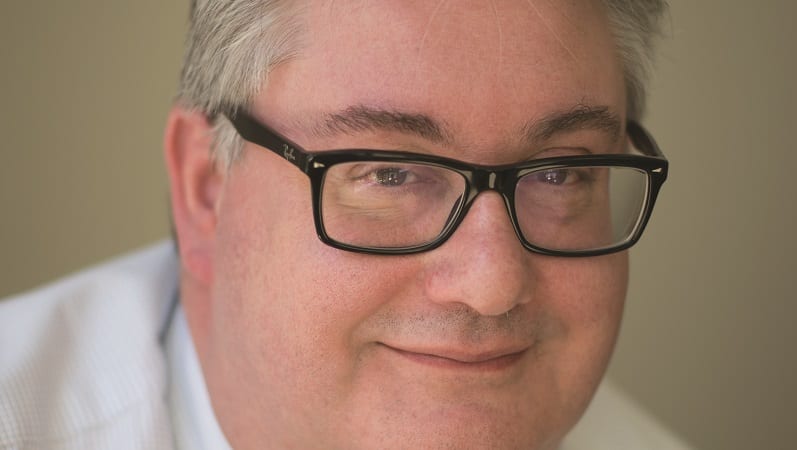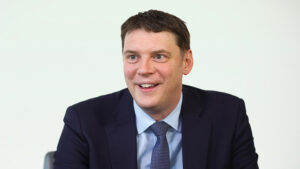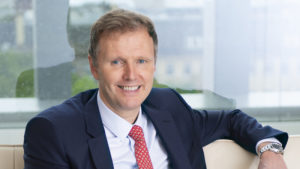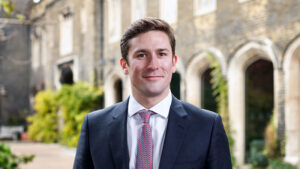A client’s time horizon and objectives are far more important than focusing on risk and return, according to KW Wealth’s Richard Stammers.
The chief investment strategist rejects the blanket ‘de-risk as you age’ approach to asset allocation, saying a 50/50 equities and bonds portfolio will look lower, medium or higher- risk depending on the time horizon over which it is viewed.
“We try to be a little more insightful than just assuming that people will be taking less risk as they get older,” he says. “They may be looking to pass the money on or engage in some sort of philanthropic programme, so it may be entirely appropriate for them to maintain their investment strategy.”
With approximately £2bn under management, the firm is evenly split between investment management and financial planning. It is company policy to place equal weight on the ability to protect clients’ wealth as it does on generating returns, as reflected in the firm’s strapline.
“We say ‘Protect and grow your wealth’ and it is no coincidence that those words are that way round,” says Stammers. “We feel passionately that we need to look after our clients’ assets every bit as much as we seek to try and maximise their returns.”
Cautious crusader
KW Wealth runs five risk-rated managed portfolios from “ultra conservative to reasonably adventurous” but Stammers claims the firm “will never be the most gung-ho house in the world”. Underneath each risk heading is a traditional active, passive, income or ethical offering, with fairly similar constituent funds across the range, albeit in different proportions.
Stammers is in charge of the company’s investment strategy, leading a committee that sets the strategic asset allocation framework over which a tactical process is laid. While the firm typically rebalances quarterly, it is not dogmatic, preferring a more responsive approach.
“If nothing has changed to warrant a portfolio shift then we might not do anything. Equally, when everything is falling off a cliff, we might push a rebalancing through. This happened recently when we were trying to take advantage of asset prices that were significantly lower than they had been.”
Stammers says the recent dip presented a particularly decent buying opportunity in emerging market (EM) equities.
“Our view is that bad days make good entry points. We prefer to buy assets at low rather than higher prices. That may sound simplistic but it’s true.”
Building on a long-term thematic play in EMs due to their shifting demographics, frontier markets have also become more attractive due to the massive overcorrection witnessed this year.
In the balanced fund, emerging markets comprise about 6.6% of the portfolio, with the JP Morgan Emerging Markets Fund the cornerstone.
“That highly regarded fund is solid, excellently run and well-diversified. It might not be the most exciting fund but we like the management team very much.”
The JP Morgan fund sits alongside Fiera New Frontiers, formerly known as Charlemagne Magna, which the team lauds for its bullish view on Vietnam.
“It is not necessarily a fund for the shy but it is about the long-term opportunity, so we believe if there is the chance to pick that up at a more attractive price, that is certainly one we will take.”

Exemplifying KW’s investment approach, Stammers explains how even the lowest-risk fund would have some exposure to frontier markets. “We consider risk at portfolio level rather than individual fund level. Provided the time horizon is right, a small allocation makes sense even for relatively cautious investors.”
First port of call
Counter to being overweight emerging markets is an underweight to US equities, which Stammers says is not due to a dislike of the market but a consequence of the way the firm allocates to international stocks.
“If we want to be overweight somewhere, by definition we have to be underweight somewhere else.” As the US makes up roughly 60% of the non-UK money, he says it regularly becomes the first port of call. “If you want to be overweight emerging markets, you’ve got to shave a little bit off the US position to do that.”
The region is accessed via large- and smaller-cap funds, namely US fund manager Dodge & Cox’s Worldwide US Stock and Hermes’ US Smid Equity, the latter of which Stammers describes as a strong fund with an impressive risk/return profile.
He concedes that an underweight stance as the US soared meant KW Wealth missed out on some performance: “We weren’t as fully invested as we could have been and missed out those last few percentage points.”
Now, however, he feels more comfortable with that position as valuations and interest rates are starting to rise and the tax cuts that hitherto supported the market’s gains may face future resistance, given the results of the mid-term elections.
Indeed, his small- and mid-cap exposure in particular may enjoy the benefits of the recent tax changes, he believes.
Where he still holds extreme reservations is over the UK, given Brexit-related uncertainty. He says: “We are quite happy to admit there are times when we don’t know, but that in itself has particular implications in terms of what we do and don’t do. The one thing we don’t do is put clients’ money into harm’s way.
“All of us on the investment strategy teams have a gut feeling that the UK market looks cheap and if the deal is agreed it could well bounce. But having a gut feeling and being willing to bet our clients’ money on it are two different things.”
With regard to fixed income, KW Wealth takes a slightly different view of the world, dividing the asset class into higher and lower risk. He says this can be defined as the lower- risk category being focused on return on capital, while the higher-risk assets look for return of capital and vice versa.
“How you put those two together is how you match a client’s risk profile,” he says.
Further, stressing the importance of time horizon, Stammers says the same assets will not always belong in the same bracket, with 10-year gilts currently in a higher-risk ‘pot’ compared with 10 years ago, when they would have been classed as lower risk.
In general, the team has de-risked during 2018, bringing its equity exposure underweight the benchmark and decreasing duration, with almost a cash-plus intent.
Twentyfour Absolute Return Credit and Axa Sterling Credit Short Duration funds feature heavily, which Stammers feels offer clients stability and protection.
“The Axa fund is a very low-risk, stable fund. One might describe it as boring but, in this space, you want boring. It is not going to give us a great return but that’s not what it’s there for. It’s there for protection.”
Gold is an asset the team finds challenges its thinking. On one hand, Stammers says he struggles with how it is priced.
“It is driven by fear, as far as I can tell. I don’t like buying things I don’t fully understand. Having said that, there has only ever been one reliable hedge against a catastrophe in equity markets, and that is gold.”
The investment team uses an iShares physical gold exchange-traded commodity to execute this hedge. It also underpins Stammers’ point about the changing role of particular assets.
He explains: “Gold might be the only true hedge for collapsing equity markets but, by definition, it is not a lower-risk asset, meaning it sits in the same pot as equities.”
Variations on a theme
Other diversifiers include the team’s thematic plays within infrastructure and the “fascinating area” artificial intelligence. While KW Wealth’s strategic asset allocation will assess equities by their risk characteristics and then by region, thematics are increasingly important.
The team was an early investor into the Smith & Williamson Artificial Intelligence Fund, which launched last year. This sits alongside the broader technology portfolio, from Polar Capital. “We see them both as important long-term positions and we’re not expecting either of them to go anywhere anytime soon,” says Stammers.
Following the global financial crisis, governments around the world have invested more heavily in infrastructure projects to stimulate their economies. KW Wealth accesses the theme through the Lazard Global Listed Infrastructure Fund. According to Stammers, this is “at the quality end of the spectrum and is very well run by an impressive team of managers”.
Private equity has also delivered some decent thematic-related returns for the team. Stammers has banked the profits and is casting his eye elsewhere in the space. The team is also on the lookout for an opportunity to play the theme of ageing population but is yet to find something suitable.







